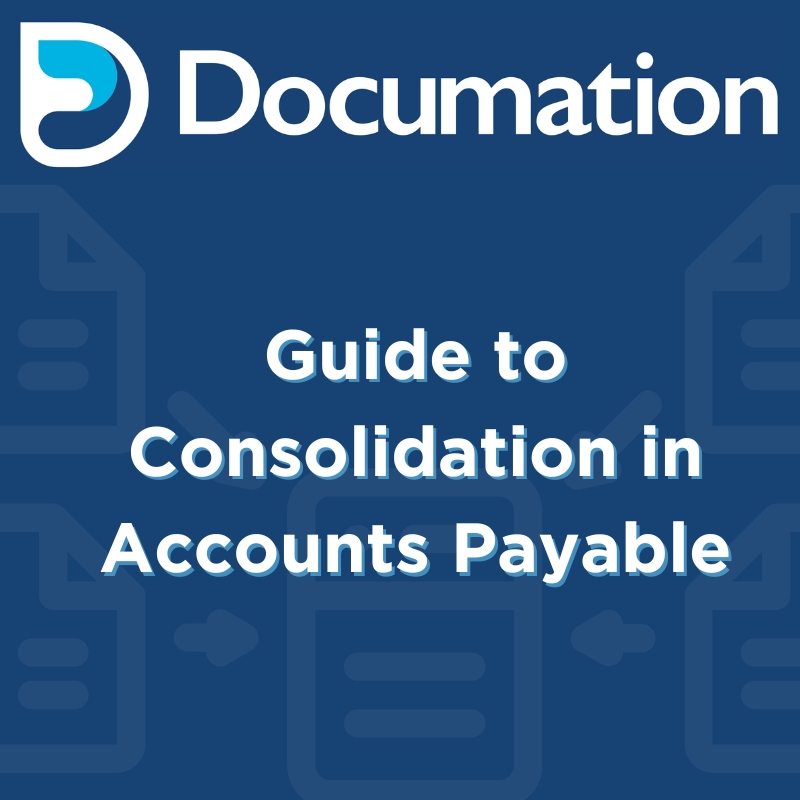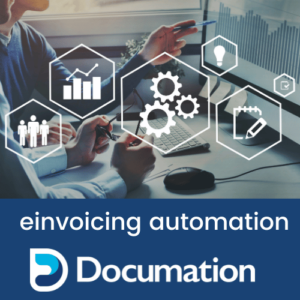Documation’s Guide to Consolidation in Accounts Payable
Accounts Payable (AP), being a critical component of any organisation’s financial operations, often undergoes consolidation processes to enhance efficiency, accuracy, and transparency in handling liabilities. In this guide, we explain what consolidation in Accounts Payable is and the advantages it represents for businesses looking to centralise their financial data.
What Are Consolidated Payables?
At its core, consolidation in Accounts Payable refers to the aggregation and centralisation of financial data related to outstanding payments owed by a company to its creditors. This process involves gathering invoices from various departments, subsidiaries, or entities within an organisation and combining them into a single, comprehensive record. The aim is to create a unified view of the organisation’s liabilities, facilitating better management and decision-making. On a large scale this could be as a Shared Services Centre, encompassing all the entities, subsidiaries and branches/depots.
Advantages of Consolidating Payables
One of the primary reasons for consolidating Accounts Payable is to gain better control and visibility over financial obligations. In large enterprises with multiple divisions or subsidiaries, each may have its own AP processes, leading to fragmentation and inconsistency in data management. Consolidation streamlines this by bringing all payable information under one roof, enabling finance teams to track expenditures more effectively and identify areas for optimisation.
- Gain better control and visibility over financial obligations
- Track expenditures and identify areas for optimisation
- Improves the accuaracy of financial reporting
- Automate finance processes
- Save operational costs
- Supports cash flow management
- Ability to negotiate favourable payment terms with suppliers
- Reduces risk of fraud, errors and non-compliance
Moreover, consolidation enhances the accuracy of financial reporting. By centralising AP data, organisations can minimise errors and discrepancies that may arise from manual entry or disparate systems. This ensures that financial statements reflect a true and fair view of the company’s liabilities, instilling confidence among stakeholders such as investors, creditors, and regulatory authorities.
Digital Transformation
Consolidation in Accounts Payable also paves the way for finance process automation and digital transformation. AP solutions leverage technology to automate invoice processing, payment approvals, and reconciliation, reducing manual effort and speeding up workflows. By consolidating AP operations, organisations can implement such systems more seamlessly, driving efficiency gains and cost savings in the long run.
Cash Flow Management
Consolidation also supports better cash flow management and working capital optimisation. By having a consolidated view of accounts payable, finance teams can identify opportunities to negotiate favourable payment terms with suppliers, leverage early payment discounts, or strategically prioritise payments based on cash availability. This proactive approach helps in optimising liquidity and maximising the utilisation of financial resources.
Regulatory Compliance
From a compliance standpoint, consolidation in Accounts Payable is instrumental in ensuring adherence to regulatory requirements and internal controls. By centralising accounts payable data, organisations can implement robust audit trails, segregation of duties, and approval workflows, reducing the risk of fraud, errors, and non-compliance. This is particularly crucial in industries with stringent regulatory frameworks, such as healthcare, finance, and government contracting. The reporting module in AP Automation solutions produce reports required for mandatory government reporting and KPIs, giving further control and visibility to consolidated AP processes.
Supplier Relationships
In addition to operational benefits, consolidation fosters better supplier relationships and strategic partnerships. By maintaining a single point of contact for payments and enquiries, organisations can enhance communication, resolve issues promptly, and negotiate mutually beneficial agreements with vendors. This collaborative approach strengthens the supply chain ecosystem and contributes to long-term business sustainability.

Is There a Downside to Consolidating Payables?
Whilst there are a number of advantages to consolidating payables, it’s essential to acknowledge the challenges associated with consolidation in Accounts Payable. Migrating disparate systems, reconciling data from multiple sources, and ensuring data integrity are some of the hurdles organisations may encounter during the consolidation process.
Moreover, resistance to change, cultural barriers, and lack of stakeholder buy-in can impede the successful implementation of consolidated AP practices. Some automation solutions allow for multiple ERPs and entities within one solution, and have all information in one solution for reporting and visibility, facilitating easier consolidation.
Consolidating Accounts Payable
In conclusion, consolidation in Accounts Payable is more than just a financial exercise; it’s a strategic imperative for organisations looking to enhance efficiency, transparency, and compliance in their financial operations. By centralising accounts payable data, leveraging technology, and fostering collaboration, businesses can unlock new opportunities for growth and innovation while mitigating risks and improving stakeholder trust. Embracing consolidation is not just about harmonising numbers; it’s about streamlining processes, and working with people and partnerships to drive lasting value in today’s dynamic business landscape.





